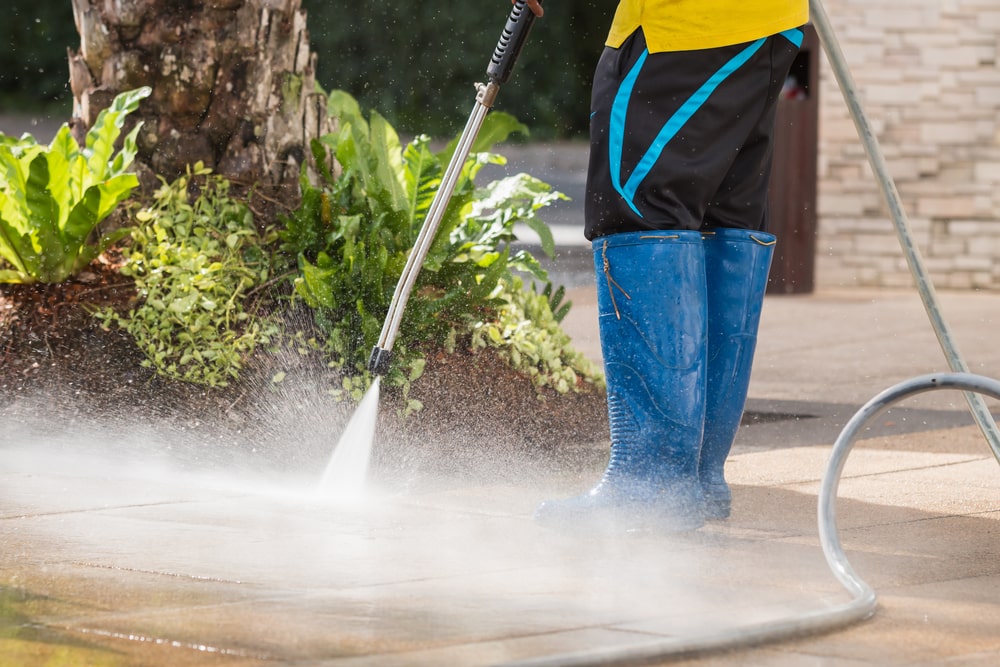The Ultimate Guide to Pressure Washing Brick
If you’re looking for a way to clean your brick surface without damaging it, pressure washing is a great option. Here’s what you need to know about pressure washing brick, from the best time of year to do it to the kind of equipment you’ll need.
The best way to pressure wash your brick is with a garden hose and a brush attachment
Looking to spruce up your brick exterior? Using a pressure washer is an effective way to clean the grime and dirt that may have accumulated over time. While power washers are available, you can achieve similar results with a garden hose and brush attachment. The brush will agitate the dirt or mold and the force of the water from the hose will help wash it away for most light surface cleaning. Make sure to use a gentle setting to not damage your bricks. For tough stains, it’s best to apply a cleaning solution before beginning the pressure washing process.
Start by wetting down the area you’ll be washing
Starting any car washing job right means wetting down the area before you begin. This is because water helps to lift dirt and grime from the surface of your vehicle and allows it to be safely washed away. Wetting down first will also prevent damage that could occur if soap or other cleaning agents are used directly on a dry surface, such as splotches, scratches, or other marks. To get the best possible clean, start by wetting down the area and flow with clean, filtered water for a few minutes before beginning your detailed car wash.
Apply the detergent to the area and scrub with the brush attachment
Cleaning with a brush attachment is an effective way to remove dirt and grime from any surface. Applying detergent to the area before using the attachment will help loosen stubborn particles, ensuring a thorough cleaning job every time. To use the brush attachment, simply affix it to either an electric drill or motorized scrubber, apply the detergent, and then turn on the power. The high rotation of the brushes will work diligently to dislodge dirt, grease, and other contaminants that have built up on surfaces over time. For best results, don’t forget to rinse well afterward!

Pressure Washing Brick
Rinse off the detergent with clean water from the hose
After thoroughly scrubbing your car with detergent and a brush, the next step is to rinse off the detergent with clean water. The best way to do this is by getting a washing hose connected to a faucet of clean water and ensuring that the pressure is adequate for removing all traces of the soap. This will not only help achieve a spot-free finish, but it will also protect the paint job as detergents are very harsh and can dull or damage surfaces if they aren’t rinsed off completely. All of this will help keep your vehicle looking pristine and brand new!
Let the area dry completely before walking on it or applying any sealants
Before applying any sealants or other treatments to your floor, it’s important to make sure that all moisture that could affect the durability and integrity of the treatment is completely gone. This means letting the area dry thoroughly – never try to rush this process, as a rushed or incomplete treatment can lead to an uneven or weakened finish, reducing the lifespan of the work and possibly compromising safety too. Investing the necessary time in allowing everything to fully dry beforehand will best protect the longevity of whatever treatment is applied afterwards.
Pressure washing your brick is an important part of maintaining the beauty and longevity of your home. Following these simple steps will ensure that you pressure wash your brick correctly, without damaging it. As always, if you have any questions or concerns, please feel free to contact us for more information.
https://www.google.com/maps?cid=11868858614971613180

Recent Comments